Updated: January 24, 2024 - 14 min read
The role and responsibilities of a Product Marketing Manager (PMM) are varied and demanding. While the role of a PMM differs from company to company, at some point in your career, you’ll probably be responsible for setting the product pricing strategy. Get a head start now by learning the foundations of pricing and give yourself a competitive edge.
In this post, we’ll take a deep dive into why product pricing is so important, common pricing approaches, as well as 10 pricing concepts every Product Marketing Manager should know.
There’s a lot to cover, so let’s jump right in.
Become a Product Marketing Pro
Gain the skills you need to land a role in Product Marketing and excel at it with our Product Marketing Manager Certification (PMMC)™.
Find Out More
What is product pricing and why is it important?
Definition: Pricing is simply the amount of money you charge for a product or service
Product pricing is a crucial element for Product Marketing Managers (PMMs) for several reasons:
Revenue and Profitability: The price of a product directly impacts the revenue generated by its sales. Appropriate pricing is essential for ensuring profitability, balancing the cost of production, marketing, and other expenses.
Market Positioning: Pricing plays a significant role in positioning a product in the market. A higher price might position a product as a premium offering, while a lower price could appeal to cost-sensitive customers. This positioning influences how consumers perceive the brand and its products.
Competitive Strategy: Pricing is a key factor in competitive strategy. Product Marketing Managers must consider the pricing strategies of competitors to ensure their products remain competitive. They may choose to price products lower than competitors to gain market share or higher to signify superior quality.
Market Segmentation: Different market segments may have varying willingness to pay. Effective pricing helps in targeting these segments appropriately, potentially with different pricing strategies like premium, economy, or value pricing.
Adaptability and Flexibility: Market conditions change, and with them, the optimal pricing for a product. Product Marketing Managers must be adept at adjusting prices in response to market shifts, consumer trends, and economic factors.
Legal and Ethical Considerations: Pricing must also adhere to legal and ethical standards. Avoiding practices like price fixing and predatory pricing is essential to maintain a positive brand image and avoid legal repercussions.
In summary, pricing isn’t just about setting a cost for a product; it's a multifaceted strategy that impacts various aspects of a product's market success, from its positioning and perceived value to its competitiveness and profitability.
In fact, according to Ajay Arora, SVP of Product Management at Disney:
“product pricing is your single most powerful lever as a business.”
Pricing fails and successes
Consider the impact of Netflix’s pricing changes in the USA and Canada. At the beginning of 2022, they made some significant changes to their pricing. Netflix:
boosted their standard ad-free tier to $15.49
raised their premium tier to $19.99
added ad-supported, “affordable” tier for $6.99
eliminated their long-standing basic plan, which had cost $9.99
After announcing the changes, their stock popped, rising by 3% when the changes were announced. The market responded well to this price increase as it was clear that it was part of Netflix’s long-term plan to keep customers engaged by offering them a wider range of options and they were betting on user retention and brand loyalty.

Netflix’s price increases were a success, but that’s not always the case.
Take the example of Patreon. In 2017 the monetization platform announced a change to its fee structure. Under the proposed new system, instead of creators paying a small processing fee on each pledge, patrons (the supporters) would bear the cost (which was a percent of the total and a standard-set fee) for each individual pledge.
The proposal received strong backlash and criticism from both creators and patrons, ultimately leading to Patreon retracting the change and issuing a public apology.
Clearly, product pricing is complex and needs to be handled with care to get it right. Later in this post, we’ll share some common pricing approaches and pricing concepts you should get familiar with.
But first, let’s get something straight…
Who is responsible for product pricing?
Ownership of pricing and packaging various from company to company. That said, here are the four most common departments that will likely own pricing and packaging:
Product Management
Finance.
Sales Operations
Product Marketing
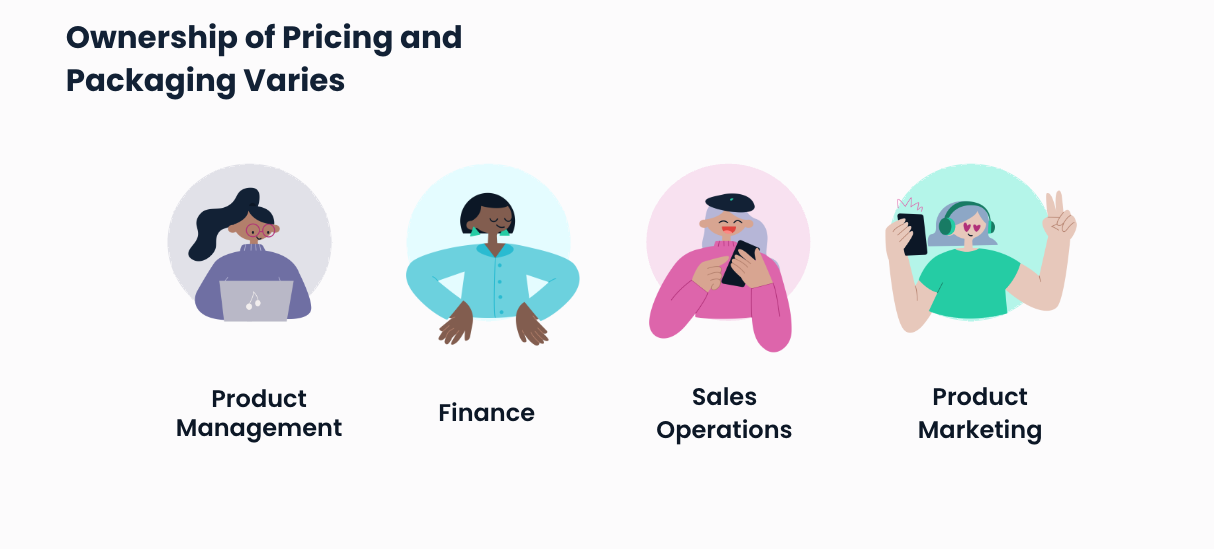
As you can see, ownership of pricing and packaging varies from company to company.
Pricing & packaging is a specialized function that PMMs are only responsible for at some companies. If you’re a PMM working with self-serve products, B2C or Product-Led Growth (PLG), you’re more likely to be more involved in pricing and packaging efforts. Most notably, PMMs are often responsible for helping customers move from one package to the next - including converting free to paid users.
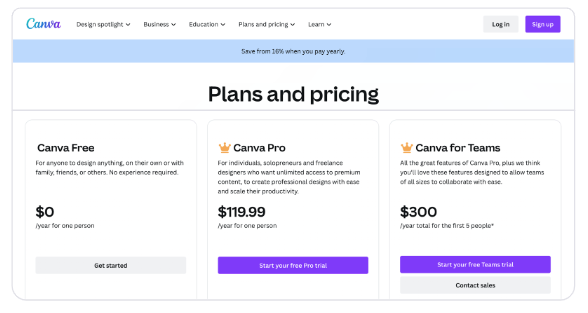
Whether your role as PMM includes pricing and packaging ownership or not, understanding the foundations can give you a competitive edge.
Now that we’re clear on the what, why, and who of pricing, let’s cover the how.
How should you approach product pricing?
Four common product pricing approaches
Let’s take a look at 4 Common Pricing Approaches that you should be aware of as a PMM.
Subscription/Flat-Rate
A common pricing approach is a subscription or flat-rate model.
This allows customers to pay a fixed amount at a fixed interval (usually monthly or annually) for access to a product or service. An example is a streaming service like Netflix or Disney+ (as shown in the example below).
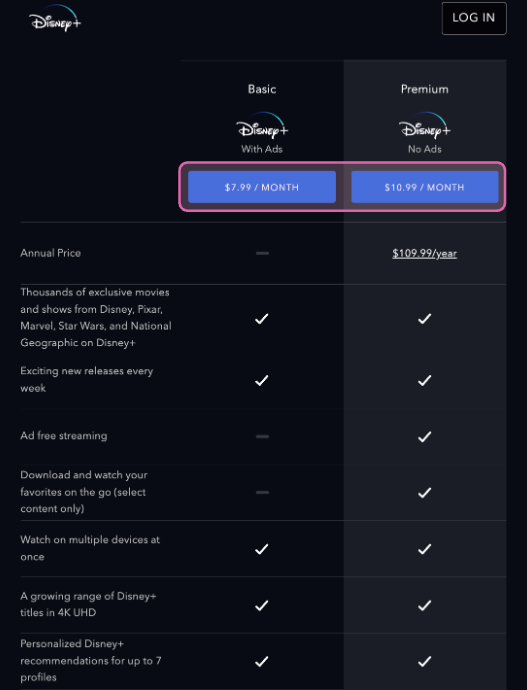
Subscription is a very common approach because it's simple and predictable, making it easy for users to budget for.
2. Seat-Based Pricing
A second common approach is seat-based pricing.
Seat-based pricing focuses on charging a fixed amount for each person or “seat” that has access to a product or service. For example, Asana’s project management tool charges per user, per month.
This approach is useful for businesses to manage costs based on the number of users.
Because this model charges per user, this approach is also sometimes referred to as user-based pricing.
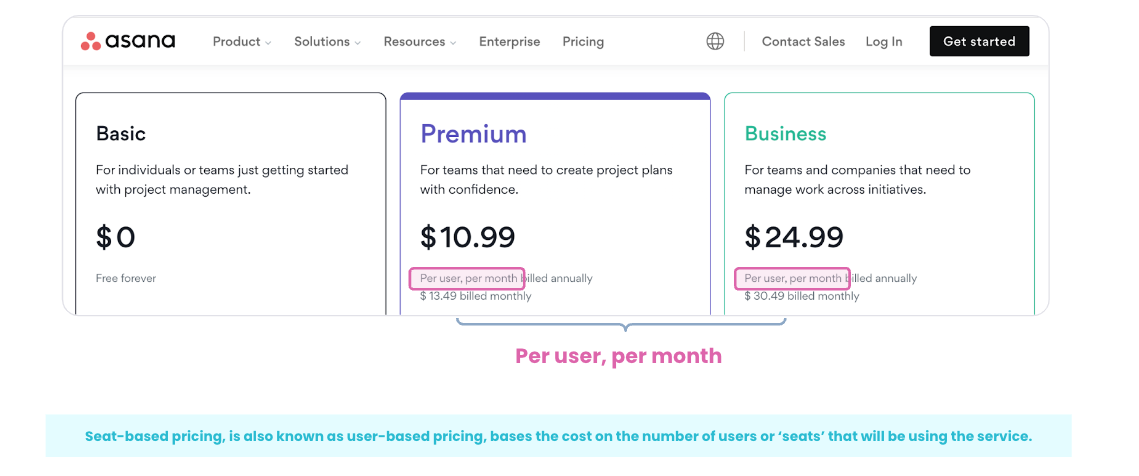
3. Usage-Based Pricing
A third common approach is usage-based pricing.
In usage-based pricing, customers are charged based on how much they use a product or service, such as with home utility bills or iCloud pricing.
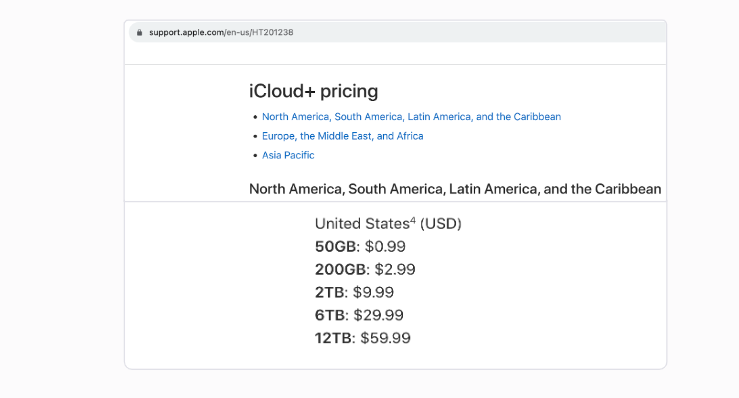
The more you use, the more you pay, so this model is useful for customers who want to be sure they are only paying for what they actually use.
The fact that the actual amount is not locked in advance is a a factor that you need to consider because many companies - and people - want predictability in what they’re going to pay.
Because this model focuses on the the metrics of user consumption to track value, this approach is also referred to as consumption-based pricing.
4. Transaction-Based Pricing
Finally, the fourth common approach is transaction-based pricing.
In transaction-based pricing, customers are changed for each specific action or transaction.
An example is Stripe payment processing where the merchant pays a percentage of each successful transaction.
It's a pay-as-you-go approach where the cost depends on each transaction.
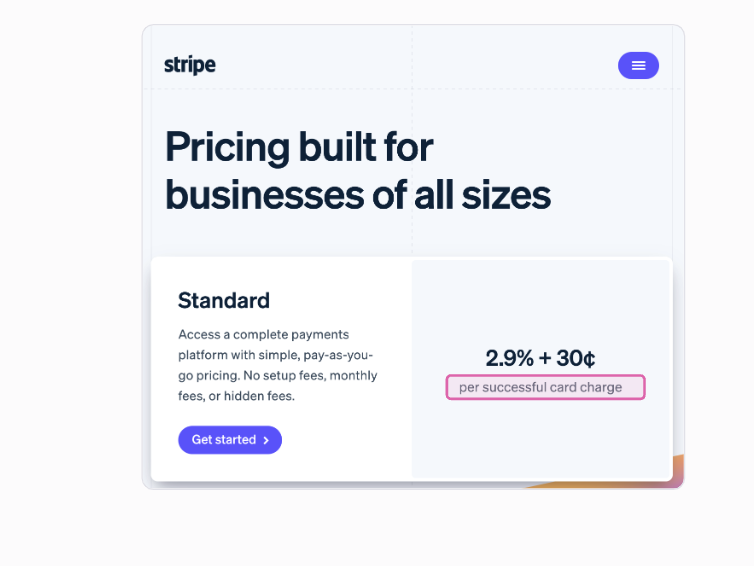
10 Pricing Concepts all PMMs should be aware of
Cost-Plus Pricing
Cost-plus pricing is a pricing strategy where a company sets the price of a product by adding a certain percentage or fixed amount usually based on the desired profit margin on top of the production cost.
In other words, they calculate how much it costs to make or procure the product and then add some extra to determine the selling price.
Example: If an apple costs a grocery store $1.00 from the orchard and the company wants a 25% margin, it sells for $1.25.
Pros:
It’s easy to understand and implement.
It ensures a predefined profit on every sale.
Cons:
It doesn’t consider the customer’s willingness to pay.
It may result in overpricing or underpricing.
2. Competitive Pricing
Competitive pricing is a strategy where a company sets the price of its product or service based on what other similar products in the market are charging.
In other words, it's about keeping your price in line with what your competitors are charging to attract customers or stay competitive.
Example: Gas stations in close proximity to each other often implement competitive pricing and offer their gas at the same price (or a few cents cheaper than the other!)
Pros:
It’s simple to determine what your pricing is.
It’s low risk, as you’re offering prices in relation to what’s currently on the market.
Cons:
It may result in profit losses by selling your product short of its potential (simply by copying others).
It assumes that everyone else has already determined the “right” price, which may not be true.
3. Economy Pricing
Economy pricing is when a company sets a low price for its product or service. In other words, it's all about offering the product at a budget-friendly cost, often by minimizing frills or features, to attract price-sensitive customers. This method focuses on the volume of sales rather than maximizing profit per unit.
Example: Walmart who has always focused on low prices and has the slogan “Save Money. Live Better”.
Pros:
It can lead to increased sales volume and market share.
It appeals to a large segment of cost-conscious customers.
Cons:
The low prices result in reduced profit per unit.
Low costs are sometimes perceived by customers to be synonymous with low quality.
4. Premium Pricing
As a direct contrast to economy pricing, premium pricing is a strategy where a company sets a higher price for its product or service. In other words, the company positions the product as offering superior quality or unique features, and customers are willing to pay more for these added benefits. Premium pricing targets consumers seeking exclusivity and perceived quality.
Example: Apple’s iPhone and Macbook are often priced higher than brand competitors' comparable models because Apple bets on brand value (and loyalty!), design and ecosystem benefits (i.e. the ability for other Apple devices to work harmoniously together).
Pros:
Selling at higher price points means greater profit margins per unit sold.
It elevates a brand’s image to be perceived as premium or luxury.
It leads to buyer loyalty, brand advocacy and, as a result, consistent sales.
Cons:
The high price point may exclude a large segment of potential customers.
It requires constant care and attention to meet and exceed customer expectations in order to justify its price point.

5. Penetration Pricing
Penetration pricing is a strategy where a company initially sets a low price for a product, as the goal is to quickly gain a foothold in the market and attract a large customer base. Over time, the company may gradually raise the price or introduce complementary products or services to increase revenue. In other words, the company sets pricing to cast a wide net, build loyalty, and increase pricing over time.
Example: Uber’s early strategy of offering lower prices than standard taxi fares helped to pull users away from traditional ride services and onto their platform.
Pros:
It can quickly establish a company’s brand identity in a competitive marketplace.
It’s attractive pricing can lead to quick adoption and referrals among users.
It’s pricing makes it difficult for higher-priced options to compete.
Cons:
It may result in profits being sacrificed in the short term for long-term gain.
Future price increases can lead to customer backlash.
6. Price Skimming
Price skimming is a strategy where a company sets a high price for a new product when it's introduced to the market to target early adopters and customers willing to pay a premium. Over time, the price is gradually lowered to attract a broader customer base as the product becomes more established. In other words, a company begins with a higher price point to to promote “premium” status, and lowers it over time as it becomes more popular to appeal to the masses.
Example: Gaming consoles like Xbox or Playstation are often released at a premium price. As months pass and their “new” status wanes, the price is reduced to make it more accessible to a wider audience.
Pros:
Early adopters who pay a premium help boost launch revenues.
It creates a larger (multiple) customer segment to target over a product’s lifecycle.
Cons:
If this strategy is repeated with each new product, it may encourage some customers to wait for prices to drop, delaying potential sales.
It may encourage competitors to undercut their prices to attract customers unwilling to pay the high initial price point.

7. Loss Leader Pricing
Loss leader pricing is a strategy where a company sells a product at a price lower than its cost to attract customers, with the expectation that they will also purchase other, more profitable products. In other words, it’s offering low pricing to get customers interested in a product and taking the profit loss knowing that, once stimulated, they will buy more to make up for said loss.
Example: Gillette razors, when purchased as an initial bundle, sell the handle and blades at a very low price. However, replacement blades (which customers need to replace frequently) are sold at a much higher margin.
Pros:
It provides potential to sell customers higher-margin items once they’re in the door.
It can deter competitors who cannot match the pricing strategy without taking substantial losses.
Cons:
It results in a significant hit to the loss-leading product.
It runs the risk of supplementary sales not occurring.
8. Dynamic pricing
Dynamic pricing is a strategy where the price of a product or service can change based on factors like demand, time, or customer behavior. In other words, a company will adjust prices depending on specific algorithms to optimize revenue.
Example: Most airlines adjust ticket prices dynamically based on factors such as remaining seats, time left until departure, competitor pricing, and time of year demand (such as holidays).
Pros:
It maximizes profits by capitalizing on high-demand periods and stimulates sales during low-demand periods.
It uses real-time market data to make informed pricing decisions.
Cons:
Price fluctuation can cause consumer frustration and perceptions of unpredictability and “being taken advantage of.”
It requires sophisticated data-tracking systems, algorithms and regular monitoring.
How to Leverage AI in Product Analytics: The Ultimate Guide
Learn how you can use AI product analytics to improve business and product outcomes, sift through massive datasets, and make better decisions.
Read Now
9. Price Discrimination
Price discrimination is a strategy where a company charges different prices for the same product or service to different groups of customers. In other words, it’s when a company offers discounts or higher prices to specific customers based on factors like their willingness to pay, demand, or their location.
Examples: Netflix charges different rates based on your location / country.
Companies often provide special discounts for students, offering the same product or service at a reduced rate compared to other users.
Pros:
It enables companies to cater to a broader customer base with varying price sensitivities.
It enables targeted promotions to stimulate sales in specific segments.
Cons:
It may alienate customers who pay a higher pricer by making them feel they got a “bad deal.”
It requires additional mechanisms to verify eligible customers and prevent cheating/gaming the system.
10. Value-based pricing
Value-based pricing is a strategy where a company sets the price of a product or service based on the perceived value it offers to customers. In other words, the price is determined by how much customers believe the product is worth, rather than just the cost of making it.
Most B2B software companies adopt value-based pricing because they set their prices on what they believe are the perceived benefits the software delivers on, such as increased efficiency, cost savings or added competitive advantage.
Pros:
It shifts the focus from the cost of production to the product benefits.
It encourages a customer-centric approach which can lead to a better customer experience.
It can lead to more profitability (in the case of software) due to low marginal costs.
Cons:
It can require research and trial and error to understand willingness to pay and perceived value.
It must account for changes to perceived value and frequent price adjustments.
These pricing concepts are not mutually exclusive
It is important to note that you can leverage multiple of these pricing concepts at the same time. They are not mutually exclusive.
Tesla is a good example:
They leverage - or at least initially leveraged - premium pricing, with buyers willing to pay a higher price, by offering a high-end, environmentally friendly, and innovative vehicle.
The also leveraged penetration pricing by attempting to expand the EV market and gain a foothold, while making electric vehicles more affordable.
And they leveraged value-based pricing by pricing their vehicles based on their perceived value.
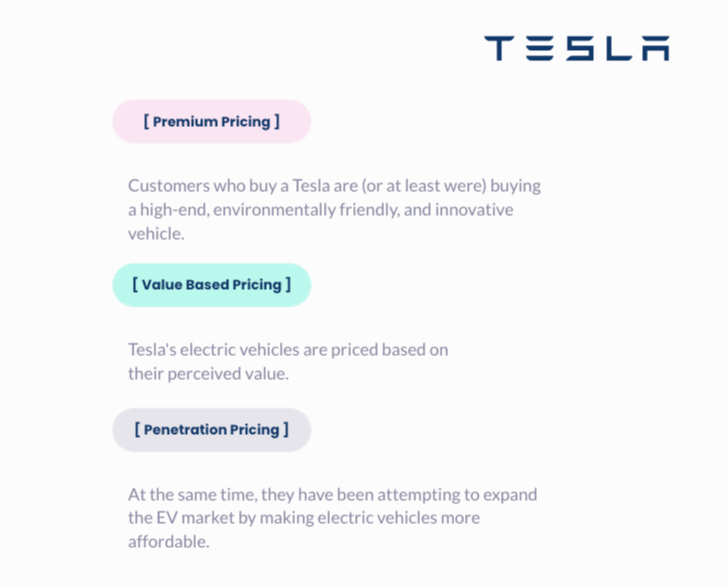
Updated: January 24, 2024



